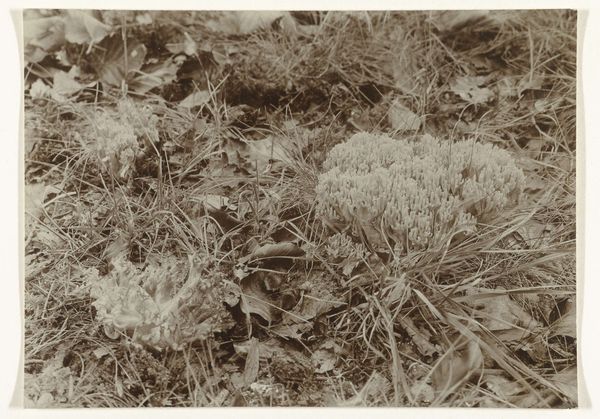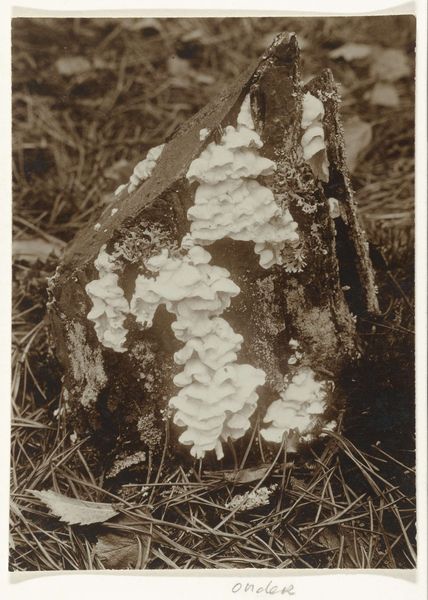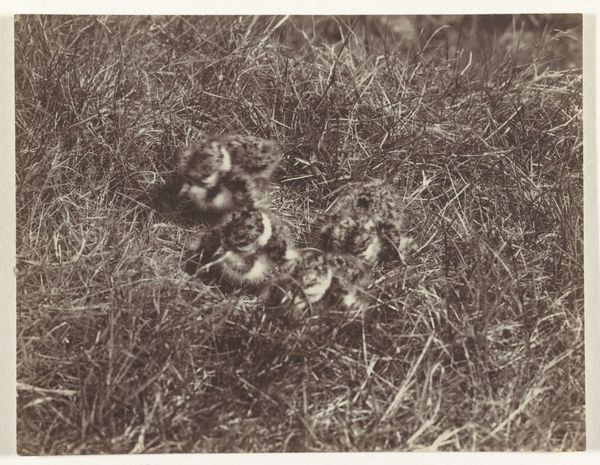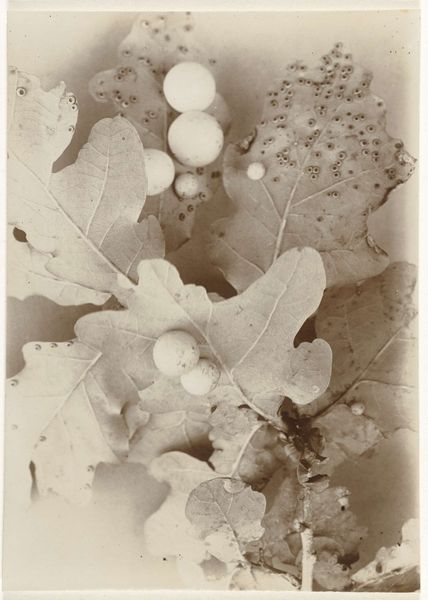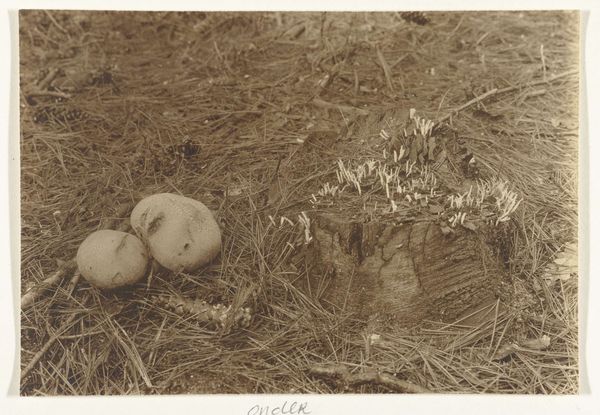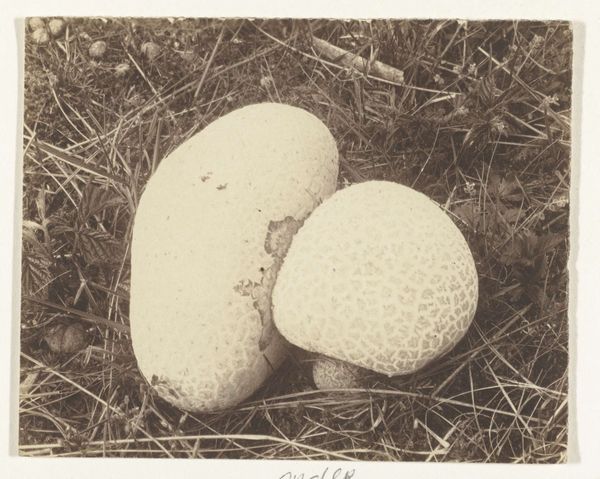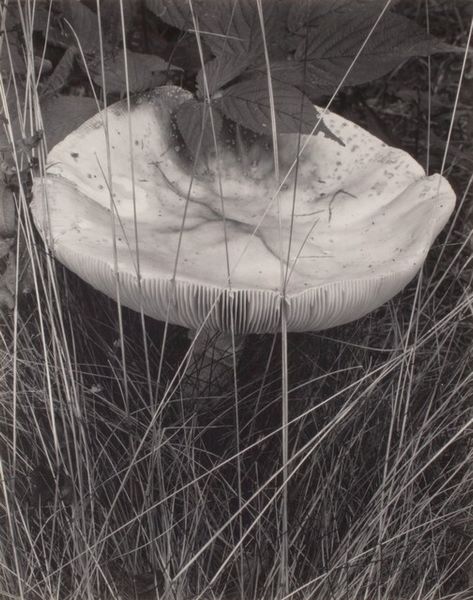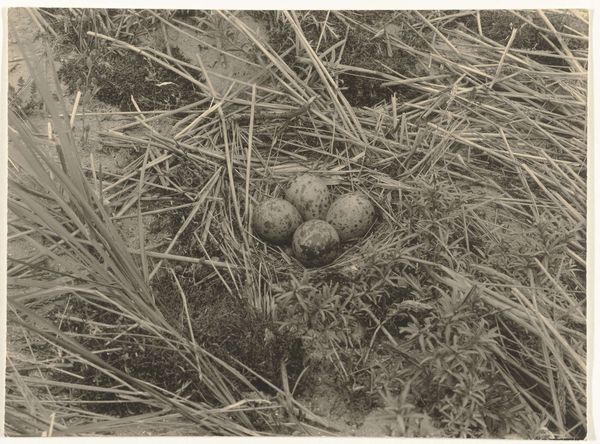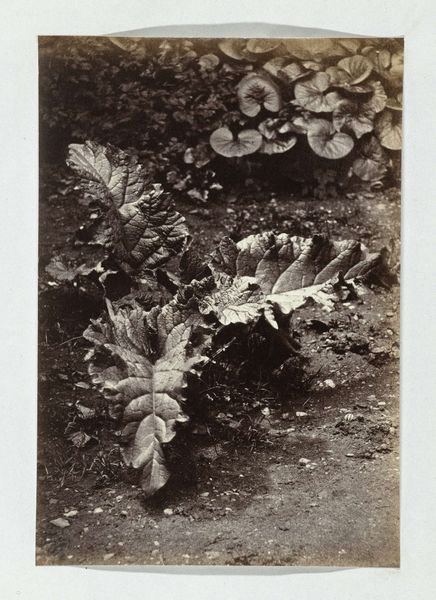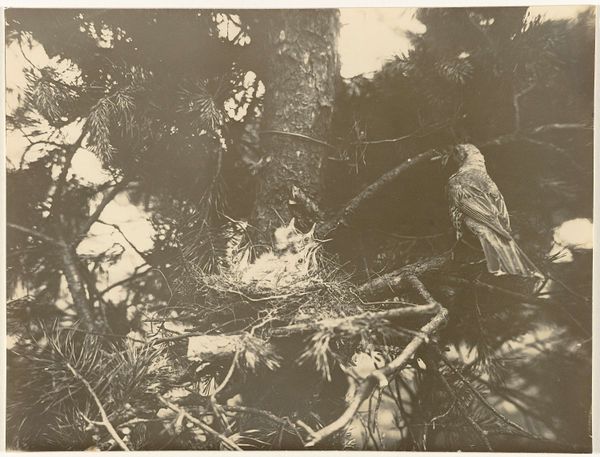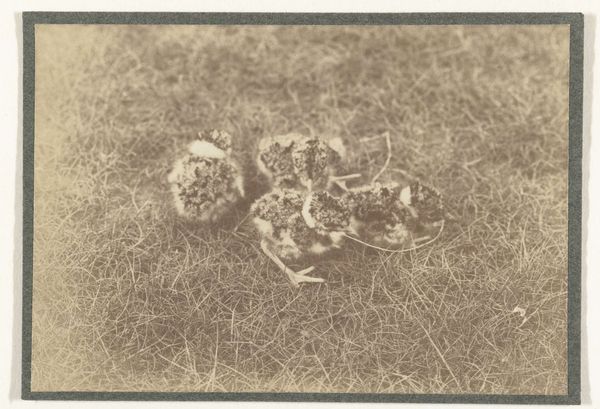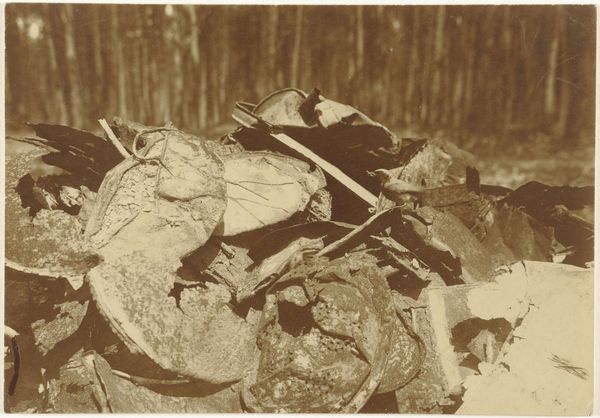
photography
#
still-life-photography
#
landscape
#
photography
#
realism
Dimensions: height 117 mm, width 168 mm
Copyright: Rijks Museum: Open Domain
Editor: Here we have "Berkenboleet," a photograph from around 1900-1930 by Richard Tepe, found at the Rijksmuseum. The sepia tones create a feeling of quiet observation. What visual symbols do you notice in this piece? Curator: The mushrooms themselves become powerful symbols. Historically, fungi have represented a link between life and death, decay and rebirth. Do you feel that duality when you observe the image? Editor: I hadn't considered that specific symbolism, but I do sense something timeless. They appear like treasures nestled among the fallen leaves. Curator: Exactly! The contrast between the delicate mushroom caps and the decaying leaves creates a compelling visual tension. It might speak to the viewer on subconscious and collective levels, through our ancestral memory about our place in nature. The specific choice of sepia further enhances this effect, associating it with nostalgia and past eras. Do you agree that it evokes specific emotions? Editor: Yes, the monochrome palette strengthens that effect of a captured moment, something preserved but also irrevocably in the past. Curator: Precisely. The "Berkenboleet" is far more than a photograph of mushrooms; it's a symbol laden with meanings accumulated through human experience. I hadn’t considered its connection to time so strongly before. Editor: This discussion really helped to unpack the depth within this seemingly simple photograph.
Comments
No comments
Be the first to comment and join the conversation on the ultimate creative platform.

